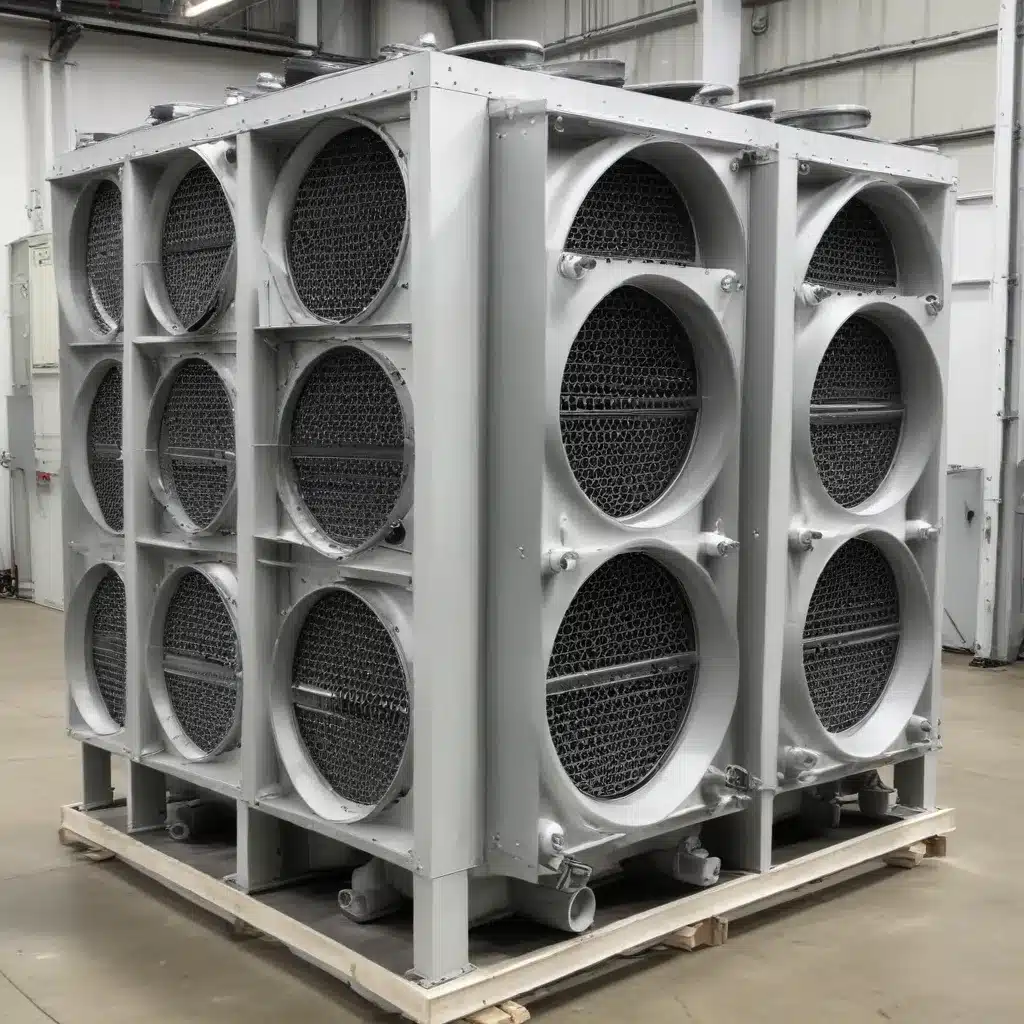
Optimizing Air-Cooled Heat Exchanger Performance Through Advanced Engineering
As a seasoned expert in the field of air-cooled heat exchangers, I’ve had the privilege of diving deep into the latest design innovations and engineering techniques that are revolutionizing this critical thermal management technology. From leveraging additive manufacturing to enhance heat transfer, to developing specialized materials and optimizing fluid flow, there are numerous strategies for reducing pressure drop and boosting the overall performance of air-cooled heat exchanger systems.
In this comprehensive article, I’ll share practical insights, industry-leading case studies, and actionable advice to help you design, engineer, and maintain highly efficient air-cooled heat exchangers across a wide range of applications, including power generation, industrial processing, HVAC systems, and beyond.
Harnessing the Power of Additive Manufacturing
One of the most exciting developments in air-cooled heat exchanger design is the application of additive manufacturing, or 3D printing, technologies. By breaking free from the constraints of traditional manufacturing methods, engineers can now create innovative heat exchanger geometries that were previously impossible to fabricate.
As highlighted in a recent blog post from nTop, additive manufacturing allows for the production of highly complex, optimized internal structures, such as lattices and topology-optimized cores. These advanced designs can significantly improve heat transfer performance while also reducing pressure drop, weight, and overall footprint.
For example, the article discusses how nTop helped Cobra Aero, a manufacturer of UAV drones, design a combustion engine cylinder heat sink using additive manufacturing. By leveraging the design freedom of 3D printing, the team was able to create a heat exchanger with an intricate lattice structure that enhanced heat transfer and airflow, all while reducing the overall weight of the component.

Combustion engine cylinder heat sink of UAV drone designed by Cobra Aero, made from AlSi10Mg, an aluminum alloy.
Additionally, the blog highlights how additive manufacturing enables the creation of heat exchanger designs that conform to available space and integrate seamlessly with other system components. This can be particularly valuable for applications where size and weight constraints are critical, such as in the aerospace and automotive industries.
Optimizing Fluid Flow and Pressure Drop
Reducing pressure drop in air-cooled heat exchanger systems is a critical aspect of improving overall performance and efficiency. By minimizing the resistance to airflow, you can lower the energy required to move the working fluid, resulting in significant energy savings and enhanced system reliability.
One innovative approach to optimizing fluid flow and reducing pressure drop is the use of computational fluid dynamics (CFD) simulations, as mentioned in the nTop blog post. By leveraging advanced engineering software, designers can now invert the traditional simulation process, using the results to directly inform the generation of the heat exchanger geometry.
This “field-driven design” approach allows for the creation of intricate flow path geometries that promote uniform airflow distribution, minimize turbulence, and guide the fluid through the heat exchanger core with minimal resistance. The blog highlights how this technique, combined with the design freedom of additive manufacturing, can lead to the development of highly efficient, low-pressure drop air-cooled heat exchanger designs.
Leveraging Specialized Materials and Coatings
The selection of materials and surface coatings can also play a crucial role in optimizing air-cooled heat exchanger performance and reducing pressure drop. As noted in the Bronswerk Heat Transfer website, the use of lightweight, corrosion-resistant materials, such as aluminum, can be particularly beneficial for applications where space and weight are at a premium, like in offshore gas processing facilities.
Furthermore, the incorporation of specialized surface treatments and coatings can enhance heat transfer while minimizing fouling and flow obstructions. For example, hydrophobic or hydrophilic coatings can be applied to heat exchanger surfaces to promote efficient condensate drainage or wetting, respectively, thereby improving airflow and reducing pressure drop.
Integrating Advanced Maintenance Strategies
Maintaining the optimal performance of air-cooled heat exchangers over their lifetime is another critical aspect of reducing pressure drop and maximizing efficiency. Regular cleaning, inspection, and proactive maintenance are essential to prevent the buildup of debris, scale, and other contaminants that can restrict airflow and increase pressure drop.
Techniques such as automated cleaning systems, remote monitoring, and predictive maintenance can help ensure that air-cooled heat exchangers continue to operate at peak performance throughout their lifespan. By anticipating and addressing potential issues before they become problematic, facility managers and maintenance teams can minimize downtime, extend equipment life, and maintain the overall efficiency of their thermal management systems.
Innovating for the Future of Air-Cooled Heat Exchangers
As the world continues to seek more sustainable, energy-efficient solutions, the importance of air-cooled heat exchanger technology will only continue to grow. By embracing innovative design approaches, leveraging advanced materials and manufacturing techniques, and implementing robust maintenance strategies, engineers and industry professionals can push the boundaries of what’s possible in air-cooled heat exchanger performance.
The Department of Energy’s BENEFIT program is a prime example of the ongoing efforts to develop cutting-edge technologies that will benefit building occupants and the grid through efficient, affordable, and resilient thermal management solutions. Projects funded through this initiative are exploring advancements in areas such as heat pump water heaters, thermal energy storage, and building envelope retrofits – all of which have implications for the future of air-cooled heat exchanger design and application.
As an expert in this field, I’m excited to see the continued evolution of air-cooled heat exchanger technology and the positive impact it will have on energy efficiency, sustainability, and the overall thermal management landscape. By sharing these insights and best practices, I hope to inspire engineers, facility managers, and industry professionals to push the boundaries of what’s possible and unlock new levels of performance and innovation in air-cooled heat exchanger systems.
For more information on the latest advancements and practical guidance in air-cooled heat exchanger design and engineering, be sure to visit the Air Cooled Heat Exchangers website. Our team of experts is dedicated to providing the resources and support you need to tackle your most complex thermal management challenges.

